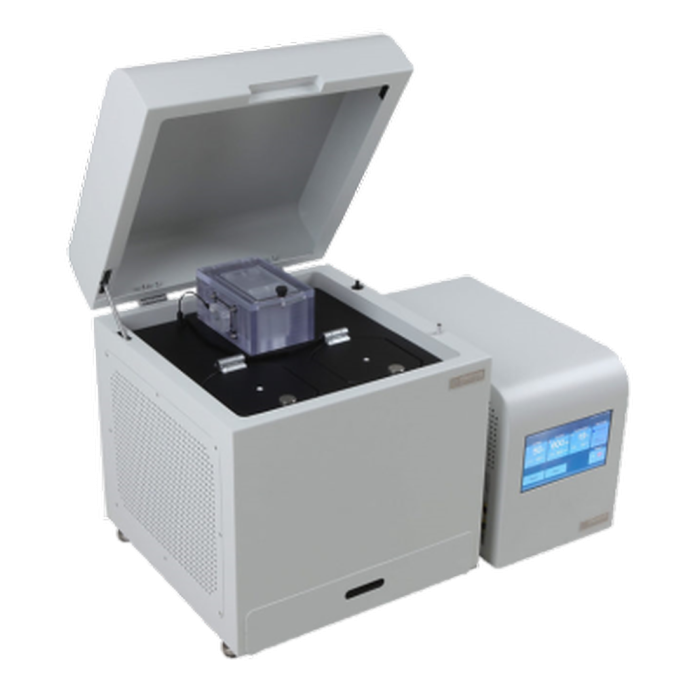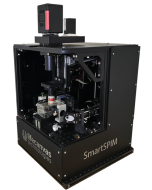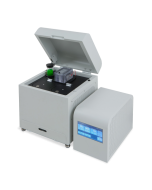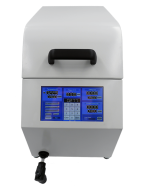SmartClear II Pro - The All New Active Clearing System- Tissue Clearing. (open Box)
SmartClear II Pro
Active tissue clearing made easy
SmartClear II Pro is ready-to-use, an order of magnitude faster than passive clearing, and provides optimal imaging and staining quality. Our SmartClear system effectively delipidates for best antibody diffusion and minimal light scatter, and ensures maximum preservation of fluorescent protein signals with optimized buffers that maintain pH.
Patent-pending nanoporous membranes prevent common issues including tissue damage, contamination, browning, black precipitates, and deformation.
Efficient and cost-effective
SmartClear II Pro can clear 4 whole mouse brains, 2 rat brains, or similarly sized samples simultaneously. Its customizable larger chamber enables clearing of various sample types and sizes to suit your needs.
Our Clear+ tissue clearing buffer set maximizes optical transparency, minimizes clearing time, and lasts ~10 days without losing efficacy. Plus, there is no tissue shrinkage or expansion!
Highly compatible
SmartClear II Pro works with many tissue preservation techniques which avoid the loss of endogenous fluorescence and tissue shrinkage present in organic solvent-based methods. The SmartClear system is compatible with:
- SWITCH (Cell 2015)
- MAP (Nature Biotech 2016)
- SHIELD (Nature Biotech 2019)
Uniform, rapid intact tissue staining can then be achieved SmartBatch+ or SmartLabel.
Our Technology
SHIELD
Protection of tissue physicochemical properties using polyfunctional crosslinkers (Park et al., Nature Biotechnology 2018)
SHIELD is a tissue preservation technique that complements and enhances the standard PFA fixation of biological tissue. It requires a series of incubation steps over 4-6 days to preserve a tissue sample the size of a whole mouse brain. These steps allow epoxide molecules to diffuse into the tissue and crosslink, forming a strong skeleton that anchors proteins, enzymes, nucleic acids, and other important elements of tissue architecture.
This preparation step is necessary for active clearing or immunolabeling, as exposure to harsher chemicals or environments can strip away important targets in non-SHIELD-preserved tissue. The strong fixation of native proteins also allows for multiplex labeling.
SWITCH
Simple, Scalable Proteomic Imaging for High-Dimensional Profiling of Intact Systems (Murray et al., Cell 2015)
The SWITCH method introduces a simple process for controlling a wide variety of chemical reactions during tissue processing of large animal and human samples. SWITCH ensures uniformity of preservation and immunolabeling via synchronization of chemical reactions throughout the entire sample.
- SWITCH-OFF: chemicals and buffers are allowed to diffuse freely throughout the tissue, and chemical reactions are suppressed
- SWITCH-ON: buffer environment is rapidly changed to a condition allowing chemical reactivity.
Tissue architecture, native biomolecules, and antigenicity are highly preserved, allowing for >20 rounds of labeling.
STOCHASTIC ELECTROTRANSPORT
Stochastic electrotransport selectively enhances the transport of highly electromobile molecules (Kim et al., PNAS 2015)
SE uses a rotational electric field to disperse highly electromobile molecules (such as antibodies or surfactant micelles) throughout a porous sample without damaging electrically charged structures within the tissue. This enables 2-4 day clearing of intact organs, <24 hour staining with nuclear dyes, proteins, and antibodies, and incredible labeling uniformity.
eFLASH
Ultrafast immunostaining of organ-scale tissues for scalable proteomic phenotyping (Yun et al., bioRxiv 2019)
eFLASH is a rapid tissue labeling technique that allows for uniform whole-organ staining in <24 hours.This method combines stochastic electrotransport with modulation of antibody binding affinity via reaction conditions to enable uniform antibody diffusion without saturation at surface targets.
Initially, high pH and high NADC concentration prohibit antibody binding. During the experiment, pH and NADC concentration are gradually lowered and antibody affinity gradually increases, leading to antibody binding as antibodies are driven in by the electric field. By the end of the experiment, pH has been neutralized, NADC concentration is low, and most antibodies are uniformly bound throughout the sample.





